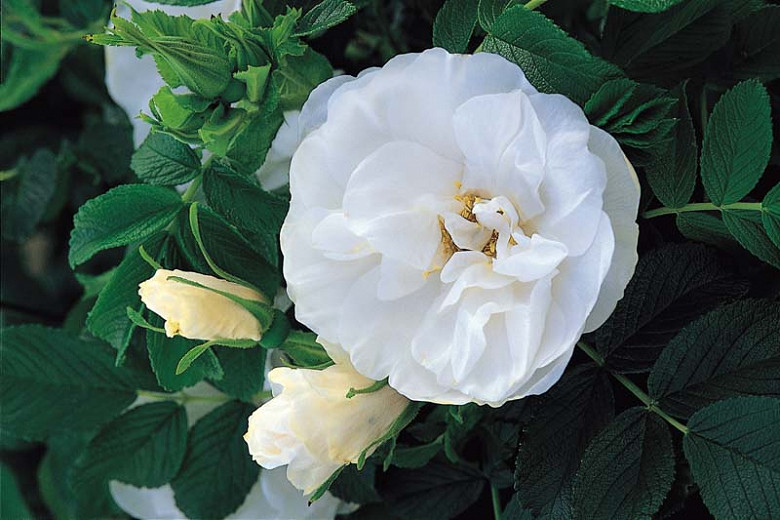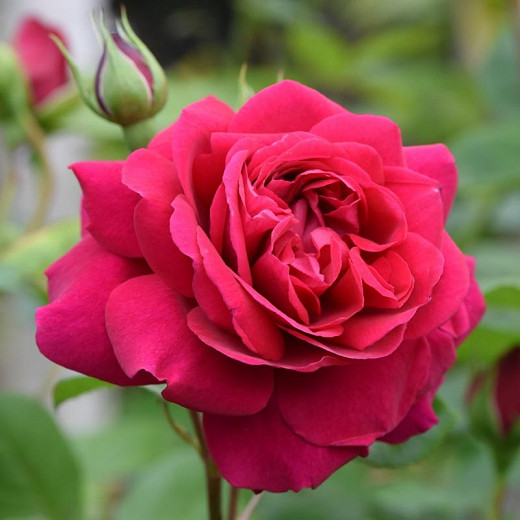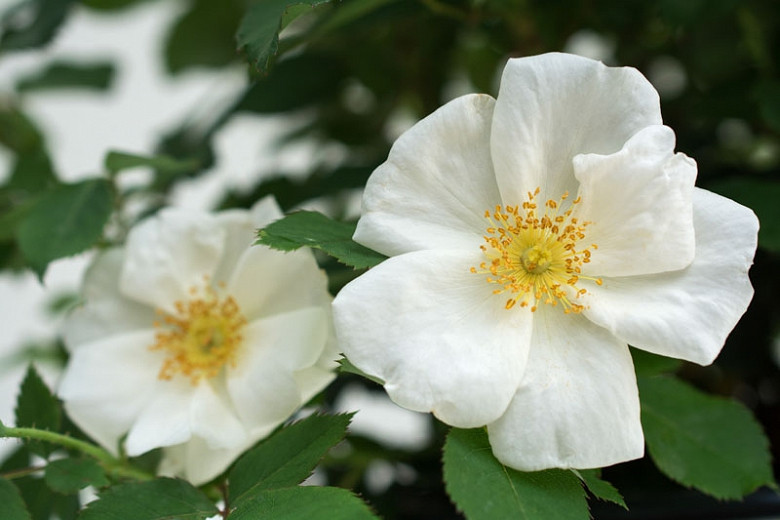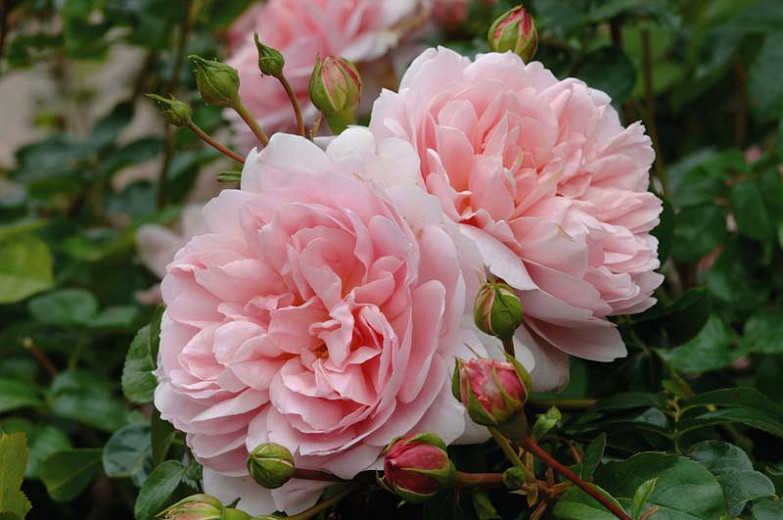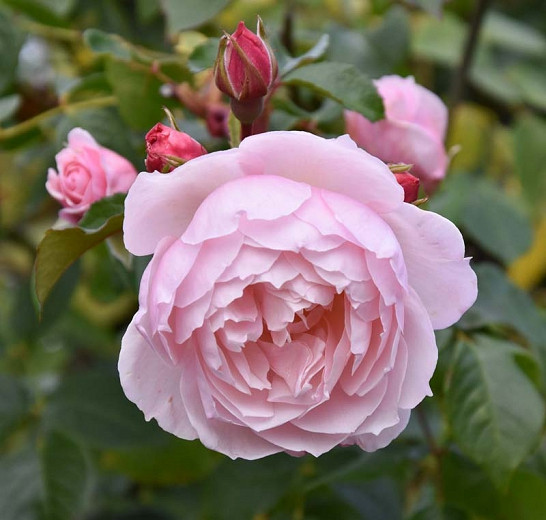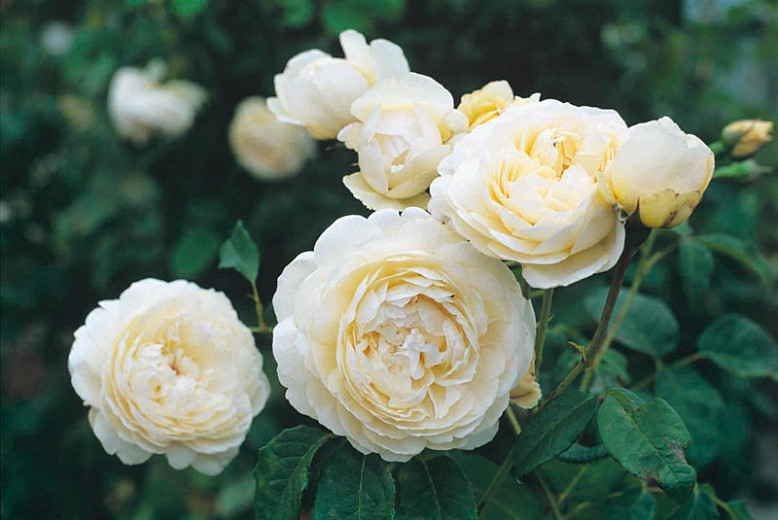Rosa rugosa Blanc Double de Coubert (Rugosa Rose)
Tough, hardy and incredibly fragrant, Rosa rugosa 'Blanc Double de Coubert' is a vigorous, upright shrub boasting a profusion of large, 4 in. across (10 cm), pure white, semi-double flowers (10-20 petals) from early summer up to the first frost. Blooming almost continuously, they are occasionally followed by fruits that are as pretty as the flowers themselves. Resembling cherry tomatoes, the striking scarlet rose hips, provide a beautiful contrast against the foliage of dark green leaves. Cherished for more than 100 years, for the length of its flowering season and the power of its fragrance, this reliable, naturally disease resistant, carefree shrub is wonderful when used as a specimen, flowering hedge or in the mixed border. Place it near a corner where you frequently pass.
- Recipient of the prestigious Award of Garden Merit of the Royal Horticultural Society.
- Grows up from 4-7 ft. tall (120-210 cm) and 3-5 ft. wide (90-150 cm).
- Best grown in full sun in humus-rich, moist, well-drained soils. Tolerant of poor soils and shade. Note that best flowering and disease resistance generally occur in full sun. For best flowering, apply a balanced fertilizer and mulch in late winter or early spring and a balanced fertilizer again in early summer.
- Featuring a bushy, upright habit, this ravishing shrub is a superb addition to borders and creates lovely fragrant flowering hedges. Perfect as a specimen plant. Give it some space so that its canes can soar or flop as they like, and enjoy their undisciplined habit.
- Very disease resistant, but watch for black spot, rose rust and powdery mildews. May be affected by aphids, leafhoppers, glasshouse red spider mite, scale insects, caterpillars and rose leaf-rolling sawfly
- Attractive to pollinating insects, butterflies and birds
- Do not remove spent flowers if you want to enjoy a beautiful crop of orange-red hips in fall and winter.
- Unlike most garden roses, rugosas object to heavy pruning. When you use them in landscaping, anticipate the fully-grown bush size and let them grow.
- Propagate by hardwood cuttings in autumn or by budding in the summer
- Bred by Charles Pierre Marie COCHET-COCHET (France, 1893).
- Rosa rugosa species is native to Eastern Russia, Korea, Japan, Northern China.
- Find where this species is invasive in the United States.
- Discover beautiful U.S. native plant alternatives.
Requirements
| Hardiness | 4 – 9 |
|---|---|
| Heat Zones | 1 – 9 |
| Climate Zones | 1, 1A, 1B, 2, 2A, 2B, 3, 3A, 3B, 4, 5, 6, 7, 8, 9, 10, 11, 12, 13, 14, 15, 16, 17, 18, 19, 20, 21, 22, 23, 24, A1, A2, A3 |
| Plant Type | Roses, Shrubs |
| Plant Family | Rosa – Shrub Roses, Rosa – Roses |
| Exposure | Full Sun, Partial Sun |
| Season of Interest | Summer (Early,Mid,Late)FallWinter |
| Height | 4' – 7' (120cm – 210cm) |
| Spread | 3' – 5' (90cm – 150cm) |
| Spacing | 60″ (150cm) |
| Water Needs | Average |
| Maintenance | Average |
| Soil Type | Chalk, Clay, Loam, Sand |
| Soil pH | Acid, Alkaline, Neutral |
| Soil Drainage | Moist but Well-Drained, Well-Drained |
| Characteristics | Fragrant, Plant of Merit, Showy, Fruit & Berries |
| Attracts | Birds, Butterflies |
| Garden Uses | Beds and Borders, Hedges and Screens |
| Garden Styles | City and Courtyard, Coastal Garden, Informal and Cottage, Traditional Garden |
